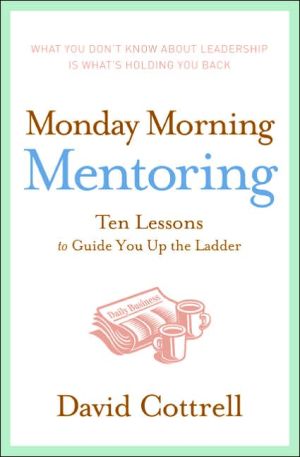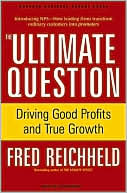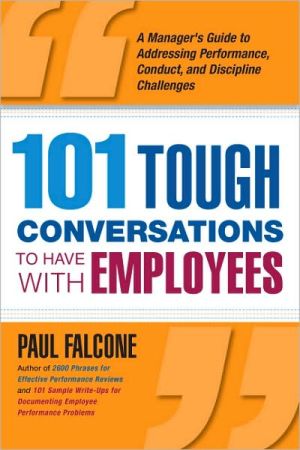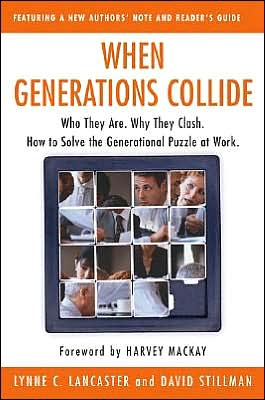Working with You Is Killing Me: Freeing Yourself from Emotional Traps at Work
Two well-respected management experts deliver an authoritative manual that provides valuable insights for turning conflicts in the workplace into productive working relationships.
Search in google:
If you find yourself getting fed up and frustrated with a colleague whose incompetence is driving you crazy, a boss who gets angry when you're not a mind reader, or an employee who habitually challenges your authority, chances are you're caught in an emotional trap in the workplace. Quit complaining and do something! Freeing yourself is easier than you think-and you don't have to quit or fire anyone to do it. The solution is simple: Take control of your own response. In this pragmatic and insightful guide, psychotherapist Katherine Crowley and nationally recognized business consultant Kathi Elster combine their expertise and twenty years of research to teach you how to unhook from upsetting situations and eliminate your workplace woes step by illuminating step. Publishers Weekly For anyone trapped in an energy-zapping relationship with a co-worker, boss or subordinate, Crowley and Elster offer an exit strategy-a highly practical and easily implemented guide to making the situation workable. Looking at the workplace from every employee's perspective, Crowley, a Harvard-trained psychotherapist, and Elster, an entrepreneurial consultant, have created a book as valuable to readers on the top rungs of the corporate ladder as it is to those near the bottom. Readers in the throes of a work crisis can find a relevant case study to lead them to relief from any situation. Whether the problem's a charming and demanding boss, dealing with a saboteur or addressing one's own inclination to play the office martyr, the authors offer frameworks for breaking down the conflict and achieving d tente. They even detail the inevitable verbal confrontation. Supervisors are provided suggestions for "parenting" employees who chronically underachieve or disappoint to help them live up to expectation, or at least their job descriptions. This empowering book delivers a sense of control over nasty workplace situations. It may also offer the answer to high job turnover. (Mar.) Copyright 2005 Reed Business Information.
Working With You Is Killing Me\ Freeing Yourself from Emotional Traps at Work \ \ By Katherine Crowley Kathi Elster \ WARNER BOOKS\ Copyright © 2006 Katherine Crowley and Kathi Elster\ All right reserved.\ ISBN: 978-0-446-69849-8 \ \ \ \ Chapter One\ Change Your Reaction, Change Your Life \ Let's explore the two faces of business-the clear, crisp Kodak image that companies present to the outside world, versus the day-to-day reality of working in any company, which is usually messy, complicated, political, and full of emotional traps.\ On the surface, business is about making money, delivering goods and services, and producing results. The focus is usually on crunching numbers, meeting deadlines, and increasing sales. We assess individual companies by their empirical facts-profit and loss, cash flow, stock options, and growth potential.\ Scratch the rational surface of any company, however, and you uncover a hotbed of emotions: people feeling anxious about performance, angry with coworkers, and misunderstood by management. You find leaders who are burnt out and assistants who are buried in resentment. For example:\ Meet Eric, manager of customer service for a fast-growing software company. He's proud of his company's products, but his head starts throbbing whenever he hears from a certain very large account. They're never satisfied with any of the products they've purchased. They claim that the accounting software is too complicated, the database has too many fields, and the time-tracking program doesn't download fast enough. Eric and his staff spend hours addressing their complaints, troubleshooting problems as they arise. "We bust our humps for these guys. As soon as we solve one problem, they call with something else." In between complaints they threaten to leave Eric's company for a better deal. "It's exhausting," Eric sighs. "I can't win."\ Jessica is the administrative assistant to the vice president of a small public relations firm. Early each morning, this VP leaves piles of work on Jessica's desk with a note: "Off to scare up more business. Please take care of these things before I return." Jessica arrives at the office, sees the stack of papers on her desk, and immediately feels anxious and overwhelmed. "My boss always gives me more work than I can possibly complete in one day," she complains. "I can't get her to meet with me and prioritize the workload." If Jessica doesn't finish everything, she's labeled "inefficient" or "lacking initiative."\ These individuals feel trapped by their circumstances, stuck in a losing game. They're unable to free themselves from a bad situation. Because business calls for unemotional behavior, their feelings remain largely unexpressed and suppressed. They think their options are just to suck it up or quit.\ We call the experience of feeling caught in an emotionally distressing situation at work being hooked. If you find yourself consistently having a strong negative internal reaction to someone or something in your work environment, you are probably hooked. Emotional hooks vary widely from person to person and job to job. Something as trivial as the nasal tone of a colleague's voice or as weighty as a manager's personality disorder can hook you. A hook can be as simple as a rude remark or as complex as professional sabotage.\ If you are a living, breathing, thinking, feeling, normal human being, there's a good chance that you've encountered people and circumstances at work that hook you. In some cases, the incident may generate only mild irritation. In other cases, you may reach a point where you feel like the person or situation is literally killing you.\ We've met hardworking individuals who want to be productive and happy at work, but instead feel emotionally trapped in numerous ways. They feel overwhelmed, overworked, underutilized, undermined, disrespected, discounted, interrupted, interrogated, sidetracked, steamrolled, set up, and fed up. Their job descriptions differ, but their experiences are the same.\ For most people, earning a living is not an option; it's a requirement. Work eats up more time than any other activity in their lives. At a time when our culture places such emphasis on feeling good, being happy, and having it all, why is it that so many people are dissatisfied at work? Our experience reveals it's largely because they feel trapped, hooked into positions, relationships, and situations that zap their energy, invade their thoughts, and keep them stuck in no-win positions.\ The workplace affords numerous opportunities to get hooked, and almost no guidance about how to deal with it. It's appropriate to go to the boss with questions regarding production, accounts receivable, or sales figures. These are nonemotional, factual issues that can be addressed objectively. But when you feel nauseous after a staff meeting or a certain account gives you a migraine, where do you turn?\ Take Susan, a marketing executive for a large financial services company. It's Thursday morning and she's sitting at the weekly staff meeting where the departments are giving their reports. Susan's colleague Tracy unabashedly takes credit for a brilliant promotion idea that Susan had originated.\ Susan feels a flash of heat surging through her body. Her face turns red. Her eyelid starts to twitch. Her hearing fades. All she can think about is how she'd like to strangle Tracy. Instead of speaking up or joining the meeting, Susan mentally checks out.\ Susan just got hooked. Her reaction to Tracy's behavior was to seethe with anger and stop participating. While Susan's response is understandable, getting caught in her own anger doesn't help her situation. In fact, tuning out makes her appear uninterested in the very idea she created.\ Susan's experience at her company's staff meeting is not unique. In fact, it's commonplace. The normal reaction when someone else's behavior upsets you is to blame your internal responses on that individual's conduct. As Tony Soprano would say before shooting his latest betrayer, "Look what you made me do!"\ In many cases, your response to the situation may make perfect sense. Vicious office gossip is infuriating. An incompetent coworker can be maddening. When a diva of a customer won't return calls it does feel insulting. But, as with Susan, your righteous indignation doesn't improve anything. It just keeps you hooked.\ There is a way out. You don't necessarily have to kill anyone or quit your job. You can stay right where you are and still have a different, more satisfying experience. We've helped thousands of people like Eric, Jessica, and Susan transform their workplace from a den of personal frustration to an arena for professional development.\ In our work with executives, managers, and employees from every industry, we've learned that the most effective way to resolve interpersonal problems in the workplace is to approach the situation from the inside out. We teach our clients that the key to dealing effectively with difficult people and situations at work is to manage our internal responses first. By internal response we mean the automatic reaction that someone else's behavior triggers inside of you. People lose it in different ways. You may heat up, blow up, shut down, freeze up, or go into a tailspin.\ If you can change your reaction, you'll change your life.\ We call the activity of changing your reaction to emotionally upsetting circumstances at work unhooking. Unhooking is a system that gives you tools for managing yourself and taking charge of your work life. Whether you feel caught in political crossfire, trapped by a difficult coworker, or held hostage by the antics of a certain department, you can unhook and take practical steps to change your behavior and create a different result.\ Unhooking provides an alternative to your automatic reactions: You can despise the malicious office gossip or you can unhook by setting clear boundaries and showing a lack of interest. You can judge the incompetent coworker or you can unhook by lowering your expectations and avoiding the negative impact of that person's ineptitude. You can feel insulted by the customer who won't return your calls or you can unhook-take it in stride and accept it as part of doing business.\ There are four essential steps to unhooking.\ Step 1-Unhook physically\ Step 2-Unhook mentally\ Step 3-Unhook verbally\ Step 4-Unhook with a business tool\ The first two steps, unhooking physically and mentally, help you release negative emotions and calm down your system. The second two steps, unhooking verbally and with a business tool, involve taking actions to change your experience. To show you how unhooking works, we return to Susan and offer a revised scenario:\ Sitting at the same meeting, Tracy proudly takes credit for Susan's brilliant promotion idea. Susan feels herself reacting-feels the surge of heat through her body, feels her face redden, her brow twitch. She realizes, "I just got hooked." What Susan needs to do now is to unhook; she needs to change her reaction to Tracy's sabotaging behavior.\ Unhook physically: Susan breathes deeply to calm herself down, release her anger, and check back into the meeting.\ Unhook mentally: Susan tells herself not to be intimidated by Tracy's behavior; she can find a way to be heard.\ Unhook verbally: Susan speaks up: "When I first ran this idea by Tracy, we both got excited about it."\ Unhook with a business tool: Susan writes and distributes an e-mail summarizing the results of the meeting and clarifying the fact that the promotion idea originated with her: "... I'm glad that my promotion idea received such a positive response from the rest of the team. I look forward to working with everyone to develop it further."\ Like Susan, once you realize that you're hooked, you can begin taking responsibility for your own reactions. You can use our four-pronged approach to free yourself from any person or situation that causes you emotional turmoil. Unhooking takes practice, but it works.\ Here is a more detailed description of how to employ each step in the unhooking process:\ Unhook physically: Calm the body and release unwanted negative energy so that you can see your situation more clearly. Physical unhooking begins with focusing on your breath, because emotional discomfort normally produces shallow breathing, which inhibits your ability to think clearly. As you consciously breathe in deeply and gently, you can also scan your body to determine how and where you may be holding tension.\ In some cases, unhooking physically requires releasing energy through physical activity-you may need to walk around the block, punch pillows, engage in rigorous exercise, take a boxing class, or get a massage. The more extreme your emotional response is to your external circumstances, the more vigorous your physical unhooking activities need to be. The goal is to release pent-up energy and quiet your nervous system so you can approach the problem with a sense of control.\ For example, you come out of a business meeting feeling upset because your boss unfairly bashed you in front of your peers. You know you need to cool down. You look at your options. If you can grab a brisk five-minute walk outside, you go for it. If you can't go outside, you go to the bathroom, splash your face with cold water, and BREATHE.\ We know that when you're in a distressed physical state, the last thing you want to do is calm down. You'd probably prefer to punch someone's lights out or tender your resignation. The last thing you want to hear is, "Take a breath, relax, go for a walk." But the fact is that if you want to change your life at work, you have to focus on relaxing physically first.\ Many places of employment understand the importance of exercise. They may offer in-house yoga, stretching, aerobics, or running. Your company may offer discounted memberships to health clubs or exercise programs nearby. Check out what is available to you, and find the form of physical unhooking that works best for you.\ We will use the term unhook physically repeatedly in this book. It refers to healthy ways of physically releasing negative energy, and covers a wide range of activities, from exercise to deep breathing to splashing water on your face. It's important to distinguish between healthy and unhealthy forms of releasing negative energy. For many of us, our natural instinct when feeling distraught is to overindulge in one of the following: food, sleep, cigarettes, alcohol, drugs, or television. These activities only eliminate stress for a short period. They do not solve or resolve the problem. In fact, they can cause other problems such as depression, anxiety, alcoholism, obesity, or ulcers. What we are suggesting here is the healthy alternative to alleviating emotional discomfort in the workplace. We can't overemphasize the importance of finding healthy ways to unhook physically.\ COUNT TO SIX Here's an easy method for calming your body through breathing. Breathe in for three counts, hold it for three counts, and breathe out for six counts. Repeat this exercise until you feel your system cooling down.\ Unhook mentally: Unhooking mentally is the internal version of talking yourself down off the ledge. It involves looking at your difficult situation from a fresh perspective. The goal is to view your circumstances objectively and see what practical options are available. The rational part of your brain must help the emotional part of your brain cool off, calm down, and strategize. Mental unhooking begins with a quick inventory of the situation:\ * What's happening here?\ * What are the facts of the situation?\ * What's their part?\ * What's my part?\ * What are my options?\ As you can imagine, that fourth question, "What's my part?" is usually the toughest to answer. When a situation causes emotional distress, your natural reaction is to blame the primary offenders, not yourself. Still, if you can uncover your part in the difficult situation, you can also find your point of leverage.\ Let's illustrate what we mean: If you're a very nice person, you may not set firm boundaries with people at work. You may find that coworkers, bosses, and customers take advantage of you. Your part in these scenarios would be your inability to draw the line and establish clear limits within these relationships. You have a hard time saying no and sticking to it. Once you discover your role-trouble setting boundaries-you can commit to learning boundary-setting skills.\ Once your mind can see the situation from a clearer point of view, you can prepare to take action. For example, say you go to the department file room to ask the clerk for a particular report. She snaps at you: "I have more important people than you waiting for files. I'll get your document when it suits me." You feel your chest tighten. This isn't the first time this person has chewed you out. You don't like her attitude. Instead of striking back, you begin to unhook mentally. You ask yourself:\ * What's happening? The file clerk just snapped at me (again).\ * What are the facts? I need that report and she doesn't want to get it for me.\ * What's her part? She's moody and not very happy at her job. Everyone is afraid of her.\ * What's my part? I take her anger personally. It stops me from completing my own responsibilities.\ * What are my options? I can stop personalizing her bad behavior. This person isn't angry with me, she's just angry. I can acknowledge her feelings of being overworked and still find ways to get the chart.\ Unhook verbally: Find the words (or sometimes the silence) to protect yourself and get out of a workplace trap. Verbal unhooking may involve finding ways to say no without jeopardizing your job, speaking up when you feel overlooked, or tolerating your boss's temporary silence immediately after you ask for a raise.\ To unhook verbally, you must be willing to focus on your overall goal in any situation rather than staying stuck in the petty details. It's a high-road approach to communicating. The goal is to express your ideas and convey information in a manner that resolves problems rather than perpetuating them.\ (Continues...)\ \ \ \ \ Excerpted from Working With You Is Killing Me by Katherine Crowley Kathi Elster Copyright © 2006 by Katherine Crowley and Kathi Elster. Excerpted by permission.\ All rights reserved. No part of this excerpt may be reproduced or reprinted without permission in writing from the publisher.\ Excerpts are provided by Dial-A-Book Inc. solely for the personal use of visitors to this web site. \ \
Introduction xiChange Your Reaction, Change Your Life 1The Business of Boundaries-Protecting Yourself at Work 23If the Role Fits, You Don't Have to Wear It 47Haven't We Met Before? Fatal Attractions at Work 73Managing Up-Taking Control 103Difficult and Extreme Bosses-How to Keep Your Sanity 127Managing Down-Business Parenting 156Corporate Culture-Is This the Right Place for You? 194Index 223About the Authors 233
\ Publishers WeeklyFor anyone trapped in an energy-zapping relationship with a co-worker, boss or subordinate, Crowley and Elster offer an exit strategy-a highly practical and easily implemented guide to making the situation workable. Looking at the workplace from every employee's perspective, Crowley, a Harvard-trained psychotherapist, and Elster, an entrepreneurial consultant, have created a book as valuable to readers on the top rungs of the corporate ladder as it is to those near the bottom. Readers in the throes of a work crisis can find a relevant case study to lead them to relief from any situation. Whether the problem's a charming and demanding boss, dealing with a saboteur or addressing one's own inclination to play the office martyr, the authors offer frameworks for breaking down the conflict and achieving d tente. They even detail the inevitable verbal confrontation. Supervisors are provided suggestions for "parenting" employees who chronically underachieve or disappoint to help them live up to expectation, or at least their job descriptions. This empowering book delivers a sense of control over nasty workplace situations. It may also offer the answer to high job turnover. (Mar.) Copyright 2005 Reed Business Information.\ \ \ \ \ Soundview Executive Book SummariesAvoiding Professional Pitfalls\ There are shelves upon shelves of books about personal relationships. If you want to know how to woo a spouse, talk to your kids or make peace with your parents, someone has written about it. But what about the people you spend most of your waking hours with - your boss, coworkers and employees? Where do you turn when your professional relationships need help? That’s the void Katherine Crowley and Kathi Elster are hoping to fill with their book, Working with You is Killing Me: Freeing Yourself from Emotional Traps at Work. \ Crowley, a psychotherapist, and Elster, a small-business expert, describe themselves as "undercover business therapists." Their main message is a common one in therapy: You can’t change other people’s behavior, but you can change your reactions to that behavior. "If you can change your reaction," they write, "then you can change your life."\ Off The Hook\ The way to do this, they explain, is by "unhooking." Signs that one is "hooked" in a situation, according to the authors, manifest in different ways. Physical indications may include headaches, fatigue or simply clenched teeth. Emotional reactions range from anger and fear to depression and despair. Finally, mental responses run the gamut from forgetfulness to revenge fantasies.\ To combat this, they offer a "Four-Pronged Unhooking Technique." The first step is to disengage yourself physically. This can be as simple as going to the restroom and splashing water on your face or getting up and taking a walk. Removing yourself mentally is the next phase. The goal, say the authors, "is to view your circumstances objectively and see what practical options are available."\ Once the proper perspective has been achieved, you can determine the best way to "unhook verbally." This involves finding the right thing to say and the right way to say it. In some situations, it may mean not saying anything at all.\ Finally, readers are advised to "unhook with a business tool." Examples of this include sending a confirmation e-mail or making a change to company policy.\ Putting It Into Practice\ The bulk of the book then goes on to explain how to implement Crowley and Elster’s technique in various office situations. Readers are encouraged to be proactive and set boundaries to prevent conflict. The authors provide specific guidelines on what areas require limits, such as time and personal space, and instructions on how to stop breaches before they happen.\ But it’s not just coworkers who can cause strife. Problem bosses are also addressed. The chapter on "Managing Up," for instance, asserts that even those who outrank you can be trained to communicate with you more effectively. For those superiors on whom such methods don’t work, there’s a section devoted to keeping your sanity under "difficult and extreme bosses."\ Management gets some help dealing with employees as well. The converse of "managing up" is "managing down"- or what the authors refer to as "business parenting." They assert that "when you’re a manager, your employees look to you for many of the same things that children seek from their parents." Crowley and Elster have identified different types of "problem children," and provide bosses valuable advice in handling them.\ But sometimes your job may just be a bad fit. The authors realize this and include a multi-section quiz designed to help readers determine if a workplace is right for them. It’s a practical, easy-to-use tool - just like the book itself.\ Why We Like This Book\ Every workplace has its share of personality conflicts. While difficult co-workers often can’t be avoided, the conflicts they present can.\ By giving readers the tools they need to take control of difficult situations, Crowley and Elster help make the workplace a more peaceful and pleasant place. Copyright © 2006 Soundview Executive Book Summaries\ \ \








